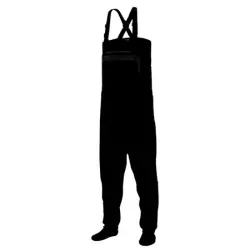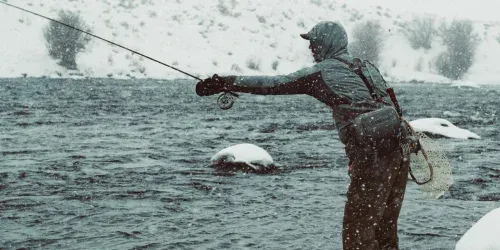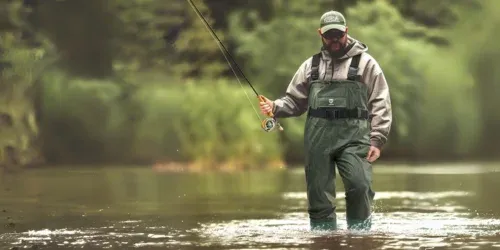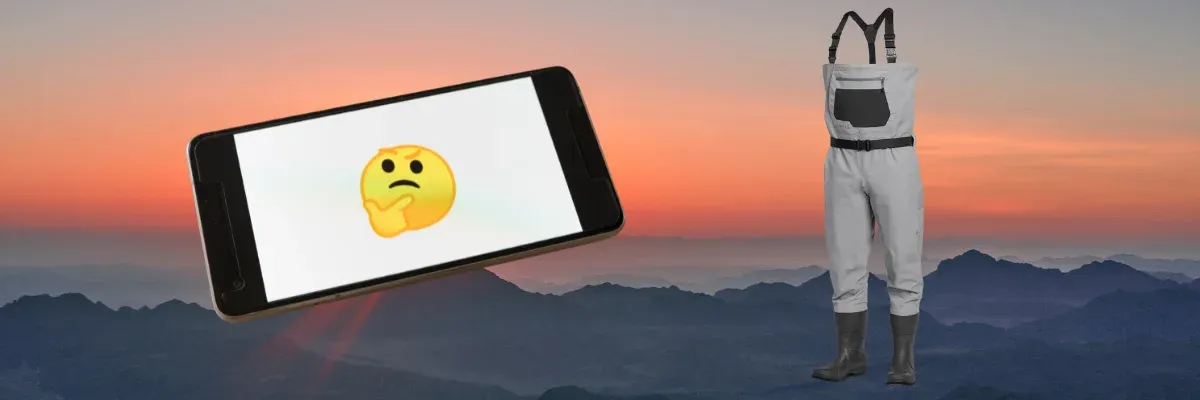Fishing and hunting enthusiasts often face the dilemma of deciding when to wear waders. The temperature of the water and air plays a crucial role in this decision. This article will delve into the specifics of when you need waders, the types available, and how to choose the right gear for different conditions.
Key Takeaways:
- Understanding the right temperature to wear waders can significantly enhance your fishing or hunting experience.
- Different types of waders and accessories are suited for various weather conditions and water temperatures.
- Proper layering and gear selection are crucial for comfort and safety in both cold and warm environments.

Understanding Water and Air Temperature
Water Temperature
Water temperature is a critical factor in determining whether you need waders. Generally, if the water temp is below 60°F, wearing waders is advisable. Cold water can quickly sap your body heat, leading to discomfort and even hypothermia. For instance, trout fishing in mountain streams often requires waders due to the consistently cold water.
Air Temperature
Air temperature also influences your decision. If the air temp is below 50°F, waders can provide the necessary insulation to keep you warm. However, in warmer weather, breathable waders or even wet wading might be more comfortable. For example, during summer, when air temps soar, wet wading with wading boots and neoprene socks can be a refreshing alternative.

Types of Waders
Neoprene Waders
Neoprene waders are excellent for cold weather. They provide insulation and are ideal for water temperatures below 50°F. Duck hunting in freezing temperatures often necessitates neoprene waders to keep warm and dry.
Breathable Waders
Breathable waders are versatile and suitable for a range of temperatures. They allow air circulation, making them comfortable in both warm and cool weather. Orvis waders, for example, are known for their breathability and durability.
Accessories for Wading
Wading Boots
Wading boots are essential for providing ankle support and traction on slippery rocks. They are crucial whether you are wet wading or wearing waders. A good pair of wading shoes can make a significant difference in your comfort and safety.
Neoprene Socks
Neoprene socks are perfect for wet wading in cold water. They provide insulation and keep your feet warm. Pairing them with wading boots ensures you have the necessary protection and comfort.
Layering for Cold Weather
Base Layer
A good base layer, such as merino wool, is essential for cold weather. It helps wick moisture away from your body, keeping you dry and warm. Wearing two pairs of socks, including a liner sock and a thicker wool sock, can work wonders in keeping your feet warm.
Second Layer
The second layer should provide additional insulation. Long johns or fleece pants are excellent choices. They trap heat and keep your legs warm, making them ideal for colder temperatures.
Layering for Warm Weather
Lightweight Base Layer
In warm weather, a lightweight base layer is crucial. It helps wick sweat away from your body, keeping you cool. Breathable waders or wet wading pants are ideal for maintaining comfort in the heat.
Sun Protection
Wearing clothes that offer sun protection is essential in warm weather. A long-sleeve shirt and a hat can protect you from the sun's harmful rays. This is particularly important when fishing or hunting for extended periods.
Choosing the Right Wader Material
Neoprene
Neoprene is excellent for cold weather due to its insulating properties. It is less breathable but provides the necessary warmth in freezing temperatures. Duck hunting in cold weather often requires neoprene waders.
Breathable Fabrics
Breathable fabrics are ideal for a range of temperatures. They allow air circulation, making them comfortable in both warm and cool weather. Orvis waders, for example, are made from breathable materials that provide comfort and durability.
Wading in Different Seasons
Spring
Spring can be unpredictable, with fluctuating temperatures. Breathable waders are a good choice as they provide versatility. Layering appropriately can help you adapt to changing conditions.
Summer
In summer, wet wading is often the best option. The warm water and air temps make it comfortable to wade without waders. Wading boots and neoprene socks are essential for protection and comfort.
Fall
Fall brings cooler temperatures, making breathable waders a good choice. Layering with a base and second layer can provide the necessary warmth. This is particularly important for activities like trout fishing in colder streams.
Winter
Winter requires the most insulation. Neoprene waders are essential for keeping warm in freezing temperatures. Layering with merino wool and fleece can provide the necessary insulation to keep you comfortable.
Practical Examples
Trout Fishing in Cold Streams
Trout fishing in cold streams often requires waders due to the consistently low water temperatures. Breathable waders with appropriate layering can provide the necessary warmth and comfort.
Duck Hunting in Freezing Temperatures
Duck hunting in freezing temperatures necessitates neoprene waders. They provide the insulation needed to keep warm and dry, ensuring a comfortable hunting experience.
Case Study: Orvis Waders
Orvis waders are known for their durability and breathability. They are suitable for a range of temperatures and provide excellent comfort. A case study of anglers using Orvis waders in different conditions highlights their versatility and effectiveness.
Tips for Staying Comfortable
Proper Fit
Ensuring your waders fit properly is crucial for comfort. Ill-fitting waders can cause chafing and restrict movement. Trying on different sizes and brands can help you find the perfect fit.
Footwear
Choosing the right footwear is essential. Wading boots with good ankle support and traction can prevent slips and falls. Pairing them with neoprene socks can provide additional comfort and insulation.

Understanding the right temperature to wear waders can significantly enhance your fishing or hunting experience. By choosing the appropriate wader material and layering correctly, you can stay comfortable in a range of conditions. Whether you are trout fishing in cold streams or duck hunting in freezing temperatures, the right gear can make all the difference.

Summary
In summary, knowing when to wear waders is crucial for comfort and safety. Water and air temperatures play a significant role in this decision. Different types of waders and accessories are suited for various conditions, and proper layering is essential for maintaining comfort. By understanding these factors, you can enhance your outdoor experience and stay comfortable in any weather.

FAQs
What is the best type of wader for cold weather?
Neoprene waders are the best choice for cold weather. They provide excellent insulation and keep you warm in freezing temperatures.
Can I wear breathable waders in warm weather?
Yes, breathable waders are suitable for warm weather. They allow air circulation, keeping you cool and comfortable.
What should I wear under my waders in cold weather?
In cold weather, layering is essential. A base layer of merino wool, followed by a second layer of fleece or long johns, can provide the necessary insulation to keep you warm.
Related articles:











